Getting Started
Hardware Prerequisites
- Raspberry Pi
- 3G/4G & LTE Base Shield
- LTE – GNSS Dual u.FL Antenna – 100mm
- LTE Full Band PCB Antenna – u.FL Plug – 100mm
- Right Angle Micro USB Cable
- Quectel EC25 Mini PCle 4G/LTE Module or Telit LE910C1 Mini PCle LTE CAT1 Module
Hardware Setup
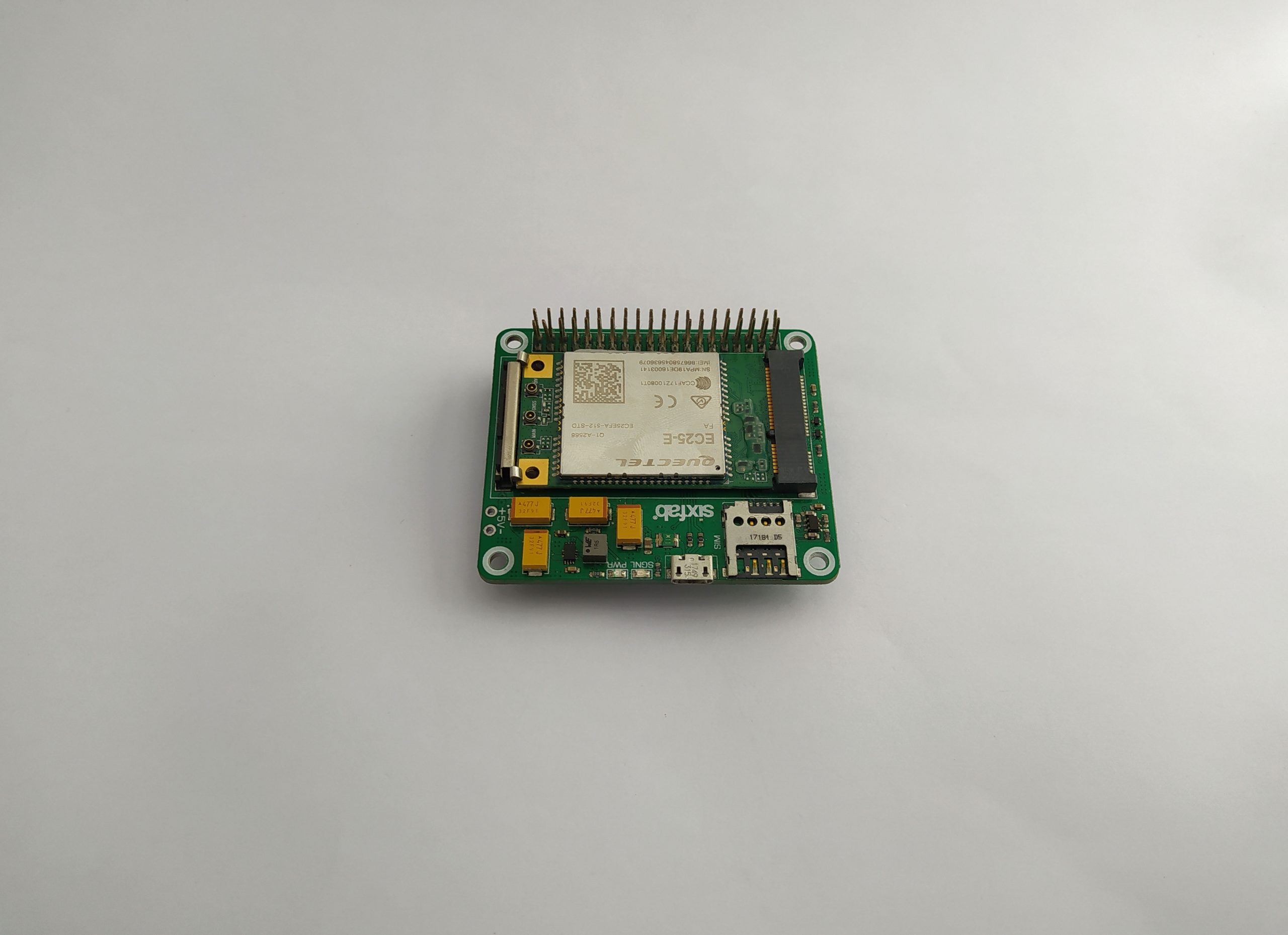
Make sure the right antenna is connected to the right port. Attach LTE full band PCB antenna/LTE connector of the LTE-GNSS dual antenna to the main Antenna interface/diversity antenna interface & GPS Antenna portion goes to the GNSS antenna interface.

EC25 Antenna Interface
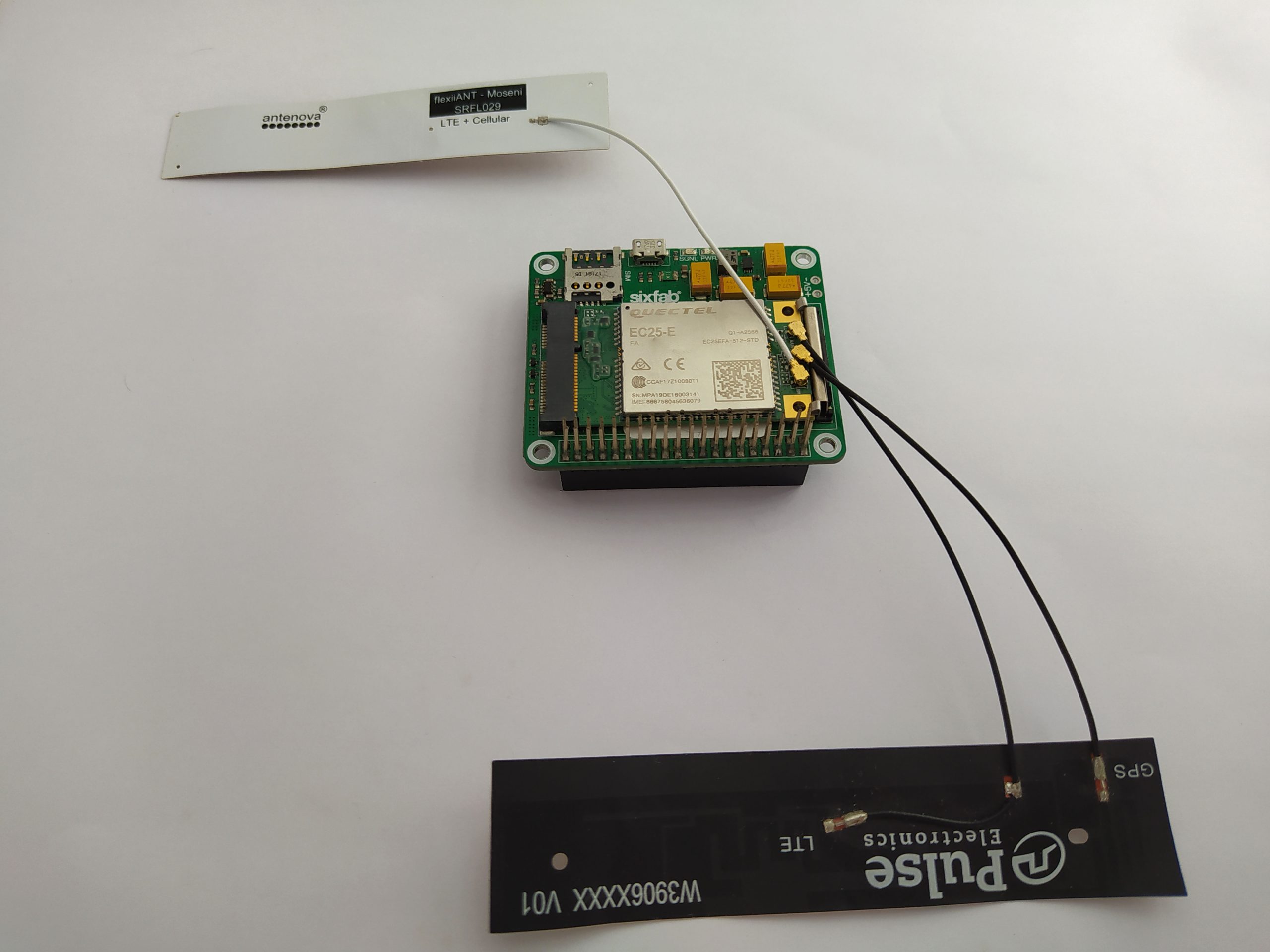
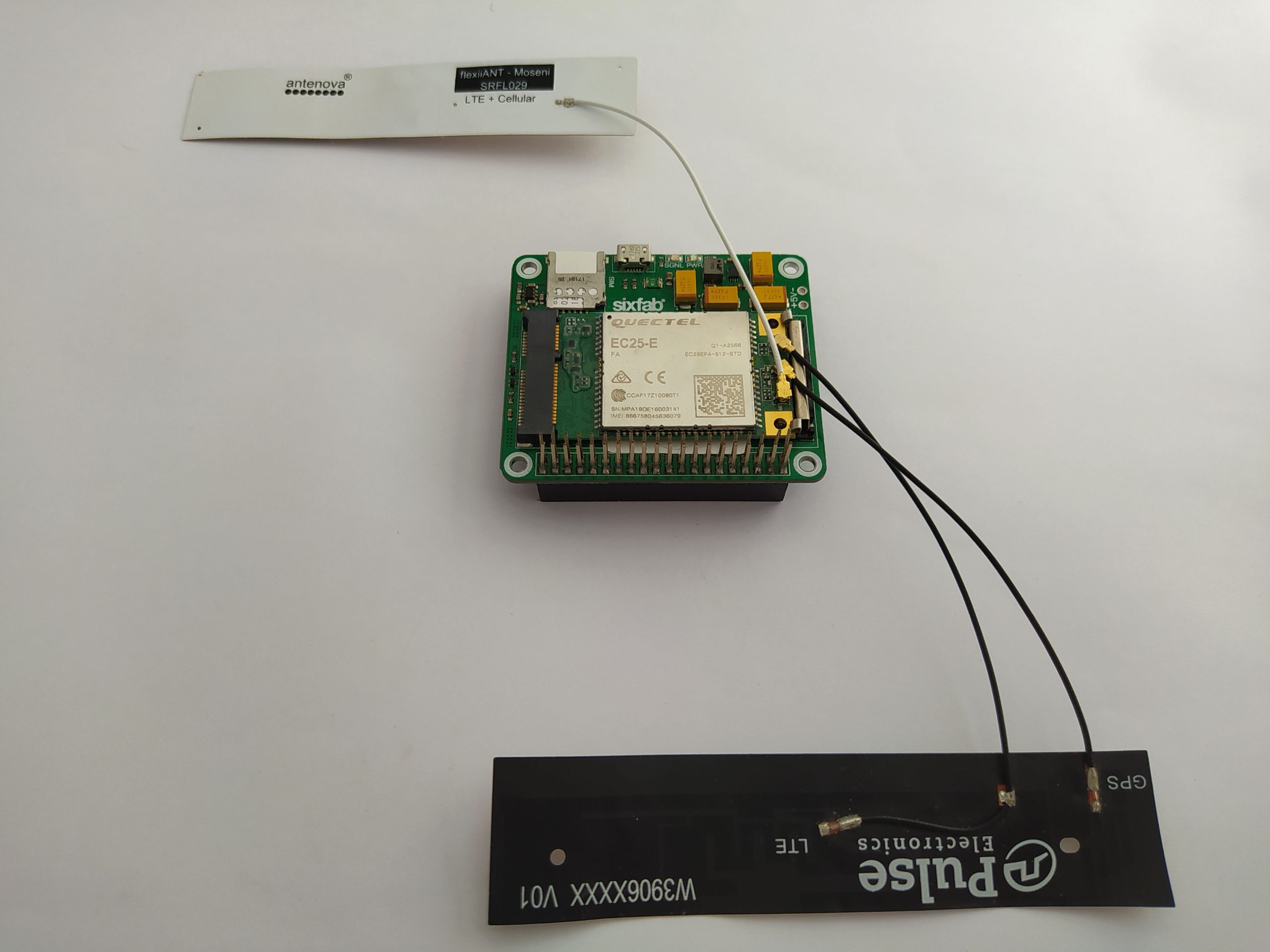
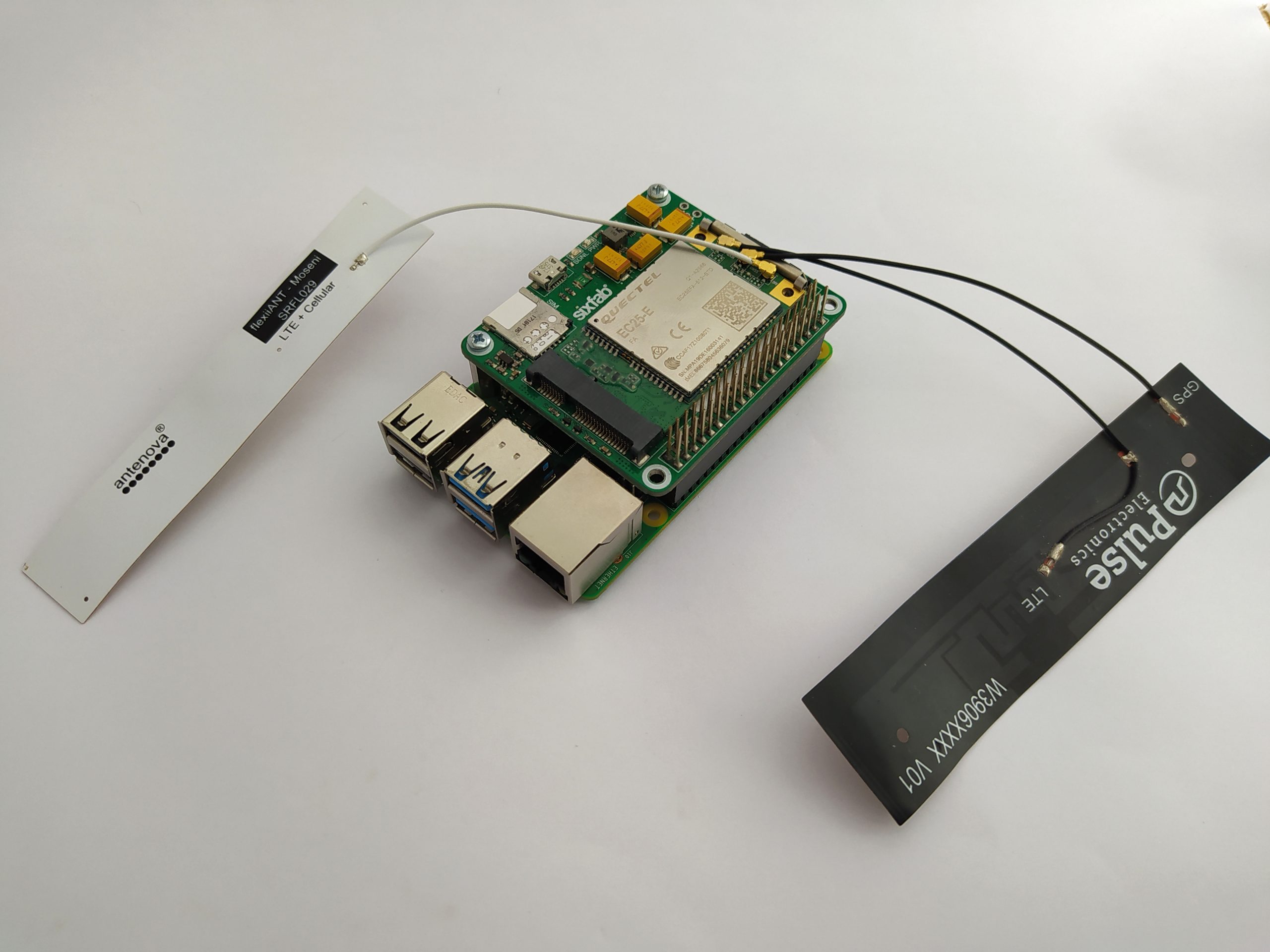
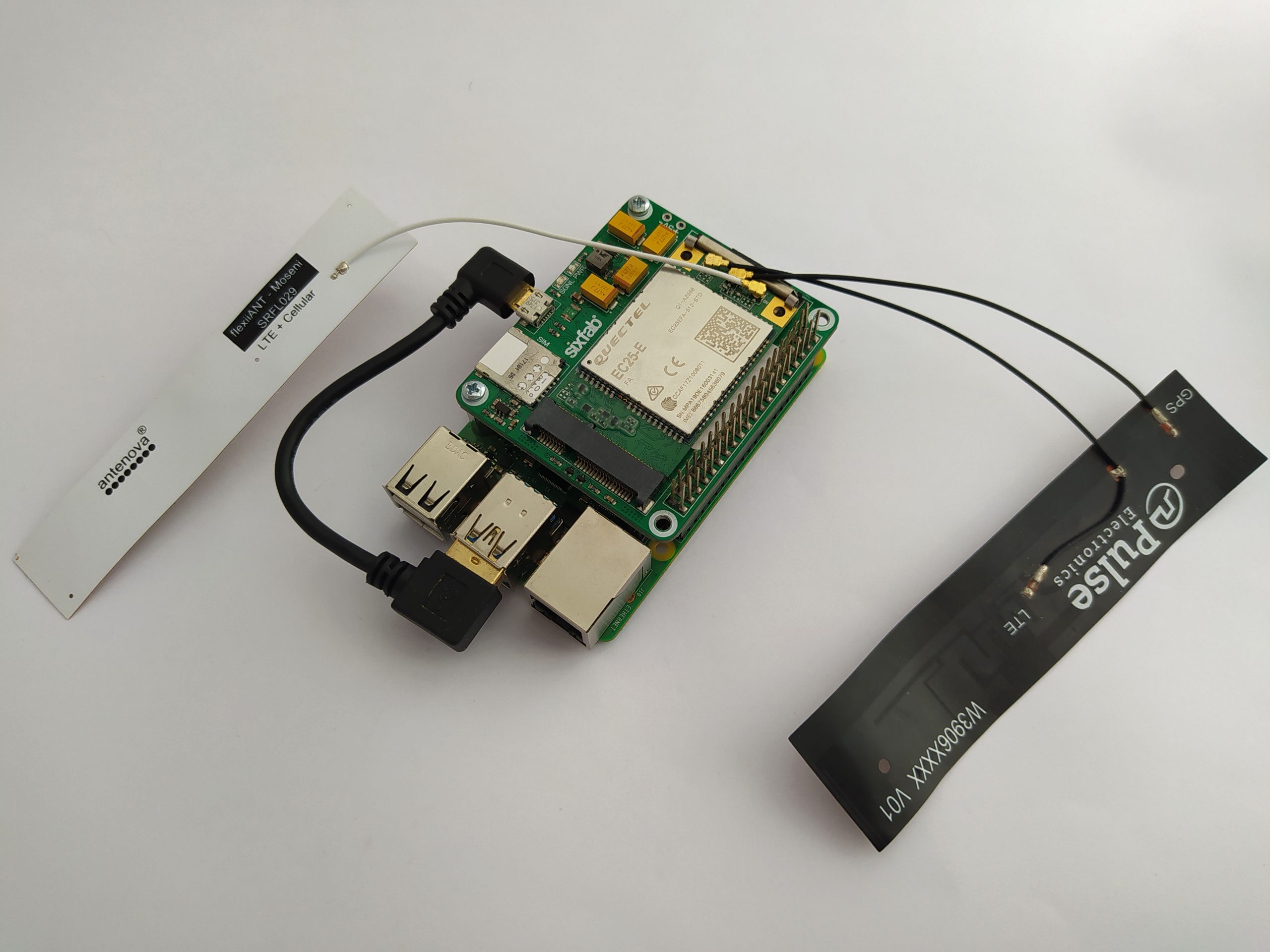
Software Setup
We have two options to reach the internet using mini PCle module with our Base Shield and Raspberry Pi.
- PPP (Point to Point Protocol)
- QMI (Qualcomm MSM Interface)
So which one among PPP & QMI should I select?
PPP vs QMI
PPP(Point-to-Point Protocol) is a data layer communication protocol that is established through the serial port of the modem. These Serial port communication could be either the UART(/dev/ttyS0) or the serial exposed to USB(/dev/ttyUSB3). This serial is also used for both modem commands (AT commands) and responses. This connection is established by dial-up (ATD*99#)
PPP is easy to establish, widely used protocol, and flexible with the devices. PPP may show a drop of the connection while using the AT command set for other functionality of modem.
The LTE radio protocol has native support of TCP/IP and IPv6, so there is no need to actually wrap TCP/IP into PPP over the radio interface. The PPP protocol is just used between the computer and the modem to make the connection look like a legacy dial-up modem-based network connection.
To get rid of the legacy cruft, newer ways to present USB-connected LTE modems like QMI and MBIM have been developed.
Quectel modules offer QMI(Qualcomm MSM Interface) which is established as a real network interface, such as ethernet(typically shows as wwan0). The QMI is also counted among the non-AT protocols which is communicated over /dev/cdc-wdm0 port.
In order to establish a connection, proper qmi/gobinet proxy should be installed, which again depends on the chipset of the module/modem and the kernel of linux, gets a bit complicated. The QMI offers more accessible and faster connection compared to the PPP protocol.
We recommend QMI, if you are looking for faster connection, and for longer duration.
If you need to establish an internet connection for a short period of time and the date to be transferred is not high, you may stick to PPP.
Updated 2 months ago
